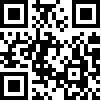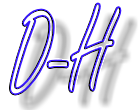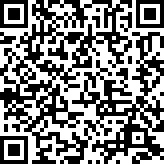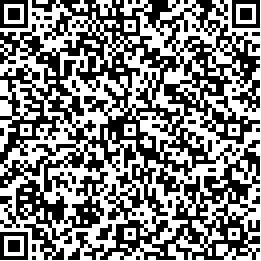Make Your Web Site Mobile Friendly and Scannable
Saturday January 9, 2010

With the Google’s release of the Android phone 2D symbolic encoding to make your website phone friendly is enjoying some additional attention. Simply point your Android, I-Phone, or Windows Mobile phone camera, with an appropriate app, at the image below and data will be instantly loaded to your phone.
Web addresses, Email addresses, SMS messages, contact details and calendar events can be read from one of these 2D Symbols. QR Codes can be embed on a web site, printed document, magazine article, or newspaper and loaded into your phone.
2D symbolic encoding or QR Code like the image below has been available since 1994, are are used widely in the east. They are quicker to scan and hold more information than an traditional bar code. When you see someone in Japan pointing their camera phone at a vending machine, they aren’t trying to take a picture of a cool machine, they are using their phone to buy a drink! The information on the QR code on the machine is being used to pay for the item. When payment is received the vending machine issues the drink.
Scanning this image will reveal my blog URL “http://blog.daisley-harrison.com” slightly larger versions can encode up to 4296 characters. Though similar to bar coding the 2 dimensional aspect of this technique allow much more data to be encoded in a smaller area.
If you get a chance to look on the back of a Google executives business card, chances are you will see a QR Code containing their “ME card” data. Point your phone at it and the contact information will be loaded auto-magically!
QR Codes have been used around the world to promote any number of things.
This larger than life QR code was used to prompt DVD release of 28 Weeks Later in London.
Here’s a guy that had a t-shirt printed up to promote his blog.
There are several companies that make reader software for just about any camera phone. Here are a few:
- http://reader.kaywa.com
- http://www.i-nigma.com
- http://code.google.com/p/zxing/
- http://www.mobile-barcodes.com/qr-code-software/- A good list of readers
To start creating your own 2D symbols just go to the on-line tool we created here: Build A 2DSymbol This free on-line tool allows you to create QR code symbols that contain a variety of different types of information. There are several optional available to help you embed the encoded symbol on your own web site or document. 2D Symbols can be created in multiple sizes and colors!
Here are a few more examples of some QR Code symbols that can be generated.
(Hover your mouse over each symbol to see the type of information encoded in them):
|
(An email address, with subject) |
(Contact information in meCard) |
|
 (A phone number) |
(Plain text) |
The Back Story
The Open 2D coding standard was originally developed an patented by Denso Wave Incorporated in 1994 and became an international standard (ISO/IEC 18004:2006) in 2000 and later revised in 2006. The Denso Wave company intentionally did not exercise the patent so it is now considered to be in the public domain. The name “QR Code” is a trade mark of Denso Wave Incorporated. More information on QR code can be found at QR Code.com
This is an open source .NET version of a QR Code encoding / decoding library available that is posted here: Open Source @ twit88.com. Another version of the library was posted on Code Project at Open Source QR Code Library
In this article I used the open source library from Code Project as a starting point. The library was originally written for .NET 2.0 and needed a few minor edits to updates for it to work with the embedded resources for .NET 3.5, and additional optomization to make it work more efffiecently with Microsoft GDI+ (The .NET graphics rendering engine). I created an HTTP Handler http://daisley-harrison.com/QRCode.ashx which is now on the root of my web site. The HTTP Handler accepts a number of parameters and does a little magic to determine the best encoding parameters to be used for obtaining optimal results. Currently the best way to use the handler is from here: Build A 2DSymbol
 Life, the Universe, and Software Engineering
Life, the Universe, and Software Engineering





